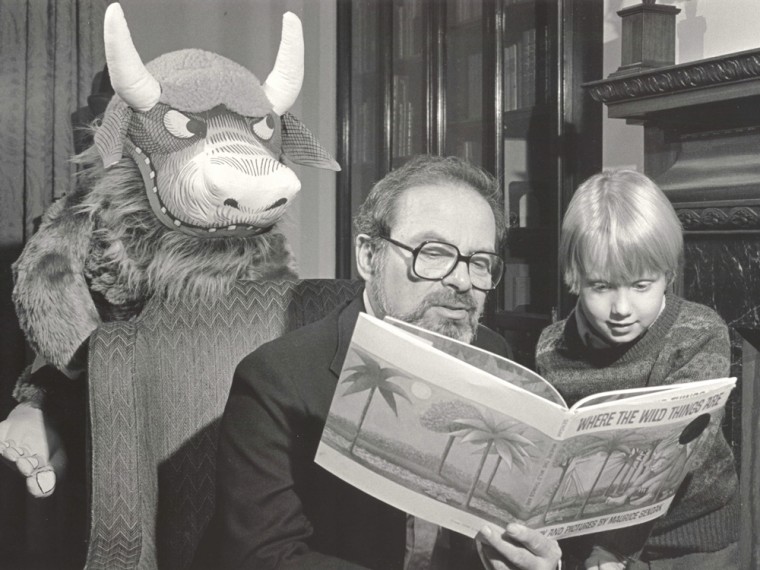This Saturday marks the 50th anniversary of one of the most beloved children’s books in literary history. Initially published by Harper & Row on Nov. 23, 1963, Maurice Sendak’s “Where the Wild Things Are” is only 338 words long, but tells a universal story of the power of imagination and the inherent need of every individual to feel a sense of warmth, belonging and unconditional love. (Oh, and a hot supper.)
On a purely surface level, Sendak’s tale concerns the anarchic exploits of young protagonist Max, who – after churlishly testing the parameters of his mother’s authority – is sent straight to bed without any supper. Sendak’s depiction of the unrepentant Max exiled in his boxy little room strikes a familiar chord with every child whose ever dared invoke the wrath of Mom. But propelled solely by his own youthful imagination (Sendak’s book well predates the era of gadget ubiquity), Max is soon journeying beyond the confines of his walls and into what he perceives as a realm where he is understood – the place where the Wild Things are.
In due course, Max is greeted by a furry congregation of lovable, gargantuan beasts (modeled after members of Sendak’s own family) who gnash and grimace at Max until he demonstrates that he’s more ferocious than the lot of them combined. The matter settled, he is crowned their leader, and a new era of wanton misbehavior begins. That is, until Max humbly realizes that even as the lord of these feral monsters, he is isolated, hungry and lonely. With that, he blithely renounces the Wild Things (who are in inconsolable upon his exit) and makes the long journey home to find that his mother – not the unforgiving disciplinarian after all – has left a hot supper waiting for her mischievous little boy.
Wrapped in Sendak’s inimitable illustrations, “Where the Wild Things Are” has an emotional resonance that has remained undiminished through 50 years. Its power to amuse, charm and inspire has earned it countless awards, accolades and imitations. Prior to his death in May 2012, Sendak flatly refused to entertain the notion of a sequel to his signature work.
As a testament to the broad appeal of “Where the Wild Things Are,” TODAY asked some of its friends, family and guests to pay tribute to the beloved children’s story. So let’s let the wild rumpus start!
